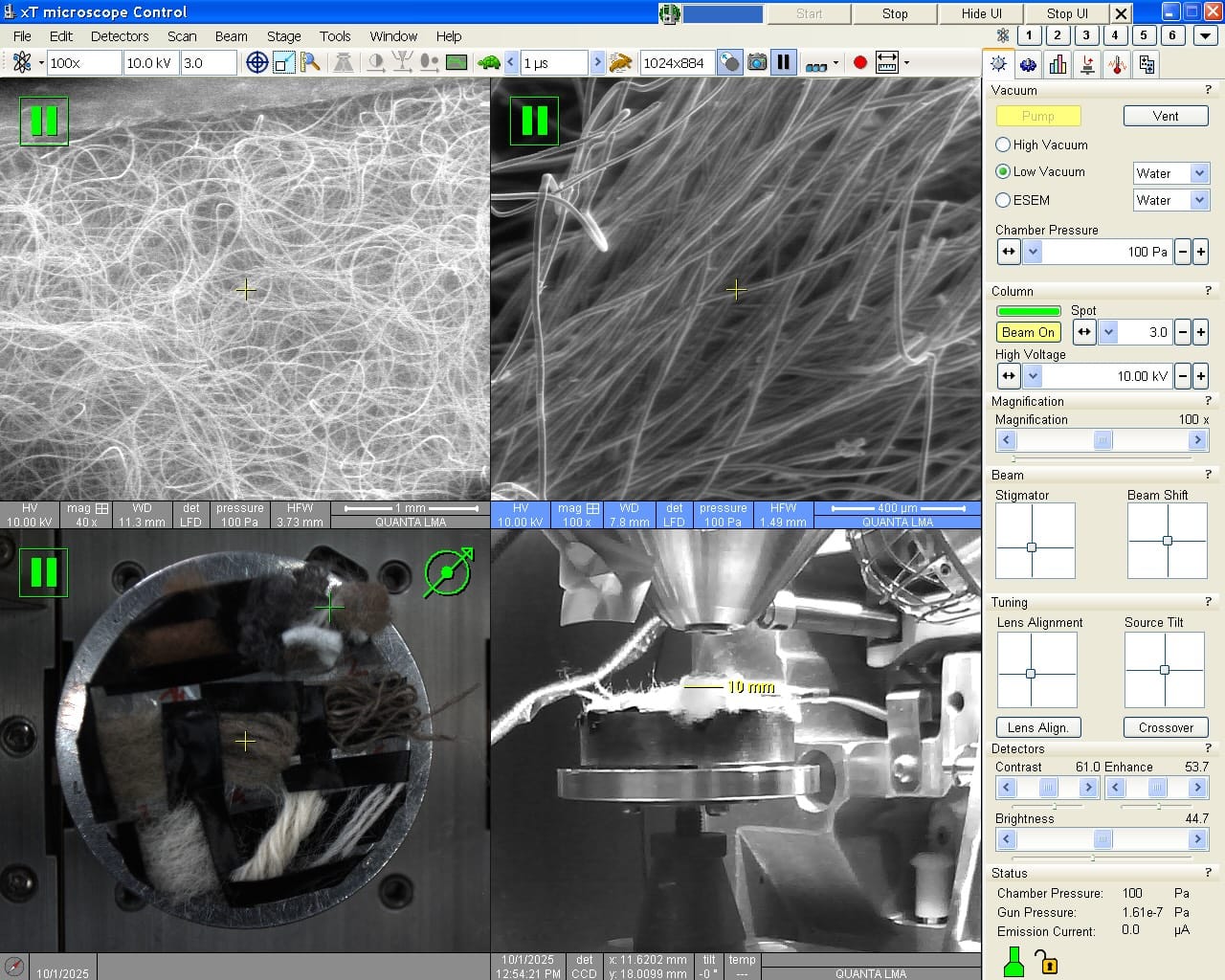As a Key part of the IMASUS project, we have been analysing the microscopic structure of some of the newest and most sustainable materials available nowadays, using scanning electron microscopy (SEM).
Last Wednesday, I had the thrilling opportunity to bring some wool samples from different origins sent by Lottozero to the LMA facilities. LMA stands for Advanced Microscopic Laboratory, placed at Zaragoza University, we had access thanks to INMA’s (Instituto de Nanociencia y Nanomateriales de Aragón).

This technique allows us to observe structural details of the fibres that are otherwise invisible, showing everything from the arrangement of the fibres to the thickness of each one. Nevertheless, preparing this samples is no-simple work, it requires being extremely careful cutting the pieces and mounting them into specialized holders, to obtain the best results. Fortunately for us, throughout the process we had the invaluable help and advice of Gala Simón, an expert in the use of this technique.
Although all samples have a similar macroscopic appearance, the differences that can be observed at high magnification are surprising, where it is possible to see even small particles, perhaps salts, resulting from previous preparation processes such as washing.
The analysis has resulted in the acquisition of a multitude of high-magnification images. These images can be useful for establishing comparisons between different types of wool, considering the thickness of the fibers that compose them or even their arrangement. This information may represent a new approach to understanding textile materials, contributing to the main research objective of promoting innovation in the fashion industry, helping us gain deeper insights and create materials that are both sustainable and high-performing.


